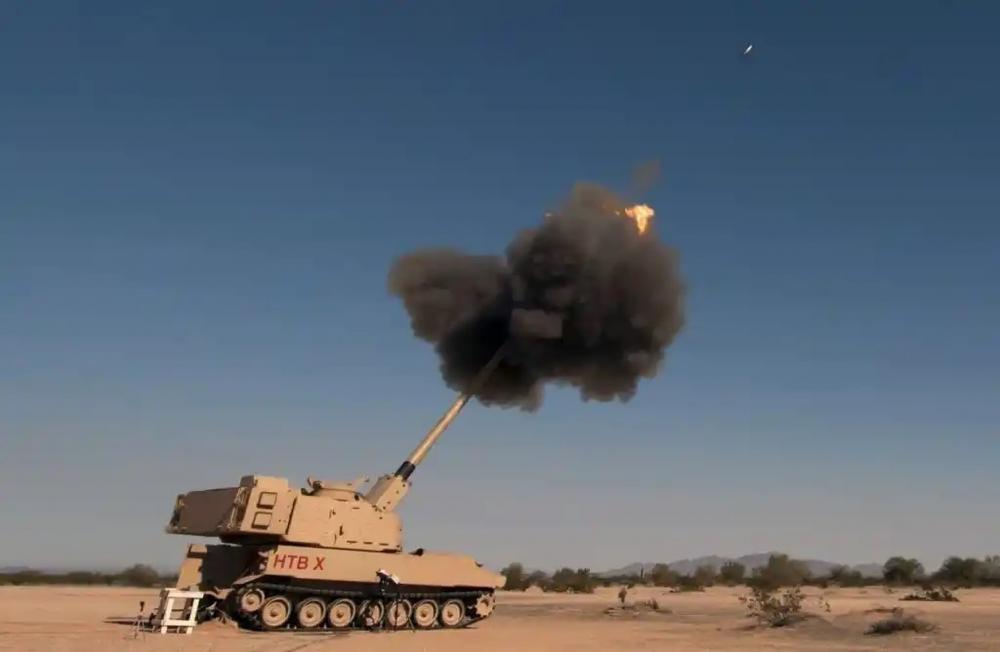Northrop Grumman successfully fired Extended Range – Precision Guidance Kit (PGK-ER) from the U.S. Army’s Extended Range Cannon Artillery (ERCA). Demonstrated in the company design maturity, Northrop Grumman continue to meet the Army’s requirements in long-range precision fires. In 2021, the U.S. Army plans to produce the upgraded M1156E2/A1, compatible with newer XM1128 high explosive and XM1113 rocket-assisted projectiles to achieve 10-meter accuracy at 30 km and 40 km respectively when fired from a 39-caliber barrel. The follow-on M1156E3/A2 in 2022 will be designed to operate with the GPS-M satellite constellation along with having a lower cost electronic module. After that, a new version known as the Long Range PGK will enable accuracy with XM1113 projectiles out to 70 km when fired from 58-caliber barrels of artillery pieces developed from the Extended Range Cannon Artillery (ERCA) program, as well as being compatible with legacy projectiles and being able to operate in a near-peer GPS threat environment.
The M1156 Precision Guidance Kit (PGK), formerly XM1156, is a U.S. Army-designed precision guidance system to turn existing 155 mm artillery shells into smart weapons. The prime contractor was Alliant Techsystems – later merging with Orbital Sciences Corporation to form Orbital ATK, in turn being taken over by Northrop Grumman and renamed Northrop Grumman Innovation Systems – and the industry team includes Interstate Electronics Corporation. By April 2018, more than 25,000 PGKs had been produced. Northrop Grumman’s Precision Guidance Kit (PGK) transforms existing 155mm high explosive artillery projectiles into GPS – guided precision weapons. PGK is an affordable solution to rapidly achieve mission success for field artillery units supporting the maneuver force. GPS-guided precision weapons on the battlefield can ensure near perfect accuracy while reducing the risk of collateral damage.

The M1128 “Insensitive Munition High Explosive Base Burn Projectile” is a 155mm boosted artillery round designed to achieve a maximum range of 30–40 km. It is used for fragmentation and blast effect against personnel and/or materiel. The development of this round follows testing of (and is based on aspects of) boosted M795-series test projectiles. The M1128 is not yet in production, but the first successful test firings have already taken place. The M1128 is expected to be compatible with a nose-mounted guidance system—specifically, the XM1156 Precision Guidance Kit, which fits the standard fuse threading common to several types of rounds. The M1128 uses the M864’s “base burn” or “base bleed” assembly.
The M1299 is an American prototype 155 mm turreted self-propelled howitzer developed by BAE Systems in 2019 under the Extended Range Cannon Artillery (ERCA) program. It is based on the M109A7 self-propelled howitzer, and was primarily designed for the purpose of improving the M109’s effective range. The M1299 is armed with a new 155 mm L/58 calibre long, a 9.1 m gun tube, XM907 gun, designed by Benét Laboratories that will fire the XM1113 rocket-assisted round. This will give a range of over 70 km – much greater than the 38 km (24 mi) of the M109A7 Paladin. When fitted, an autoloader will allow rates of fire of up to 10 rounds per minute. Originally the autoloader was planned to carry 31 rounds and be in service by 2024.
















